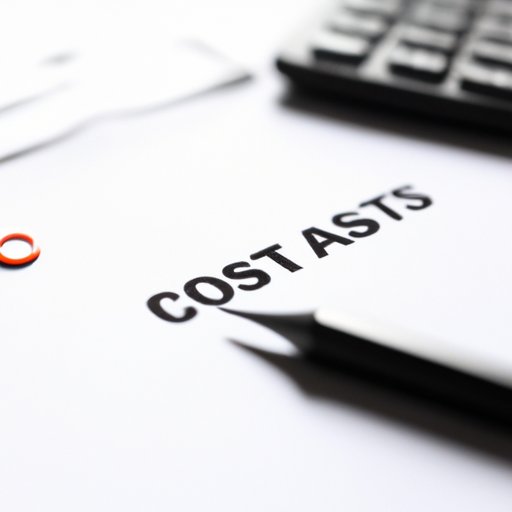
Introduction
For businesses to be successful, they need to have a good understanding of their finances and where their money is going. One important aspect of financial management is knowing how to calculate fixed costs and their impact on the bottom line. In this comprehensive guide, we’ll cover everything you need to know about fixed costs and how to calculate them accurately.
Understanding Fixed Costs
Fixed costs are expenses that do not change with the level of sales or production. Some common fixed costs include rent, salaries, utilities, and insurance. In other words, regardless of how much a business sells or produces, these costs remain the same. Fixed costs can have a significant impact on a business’s bottom line because they represent expenses that must be paid regardless of how much revenue the business generates.
To calculate fixed costs, you need to add up all the expenses that do not change with sales or production. Typically, fixed costs are calculated on a monthly or annual basis.
Fixed Costs vs. Variable Costs
Variable costs, on the other hand, are expenses that change with the level of sales or production. Examples of variable costs include raw materials, direct labor costs, and shipping costs. Variable costs can increase or decrease depending on the volume of sales or production. As a result, businesses need to be able to distinguish between fixed costs and variable costs to make informed financial decisions.
Understanding both types of costs is important for businesses because it can help them determine the breakeven point for sales or production. The breakeven point is the level of sales or production where the business covers all its expenses and makes a profit.
A Step-by-Step Guide to Calculating Fixed Costs
To calculate fixed costs, follow these steps:
- Identify all the fixed expenses for the period you want to calculate (e.g., month, quarter, year).
- Add up all the fixed expenses to get the total fixed cost.
It’s important to note that some expenses may not be fixed or variable but instead may fall somewhere in between. These expenses are called semi-variable costs or mixed costs and can be more challenging to calculate accurately.
Examples of Fixed Costs
Fixed costs can vary depending on the industry or type of business. For example, a manufacturing business may have fixed costs such as rent, salaries, and utilities, while a service-based business may have fixed costs such as rent and insurance.
Other examples of fixed costs include property taxes, depreciation, and loan payments. Although these expenses may vary slightly from year to year, they are still considered fixed costs because they do not change with sales or production.
How Fixed Costs Impact Pricing Decisions
Understanding fixed costs can help businesses make smarter pricing decisions. For example, if a business has high fixed costs, they may need to price their products or services higher to cover those expenses. On the other hand, if a business has low fixed costs, they may be able to price their products or services lower and still make a profit.
When making pricing decisions, businesses need to consider both fixed and variable costs. By understanding both types of costs, businesses can ensure that they are pricing their products or services appropriately to make a profit.
Tracking Fixed Costs Over Time
Tracking fixed costs over time is important for businesses because it can help them identify trends and make informed financial decisions. By keeping track of fixed costs, businesses can also identify areas where they can cut costs and improve their profitability.
One way businesses can track fixed costs is by using accounting software or spreadsheets. These tools can help businesses keep track of their expenses and identify any changes over time.
Conclusion
Understanding fixed costs and how to calculate them accurately is essential for businesses of all sizes and types. By distinguishing between fixed costs and variable costs, businesses can make informed financial decisions and optimize their pricing strategies. Tracking fixed costs over time can also help businesses identify areas where they can cut costs and improve their profitability.




